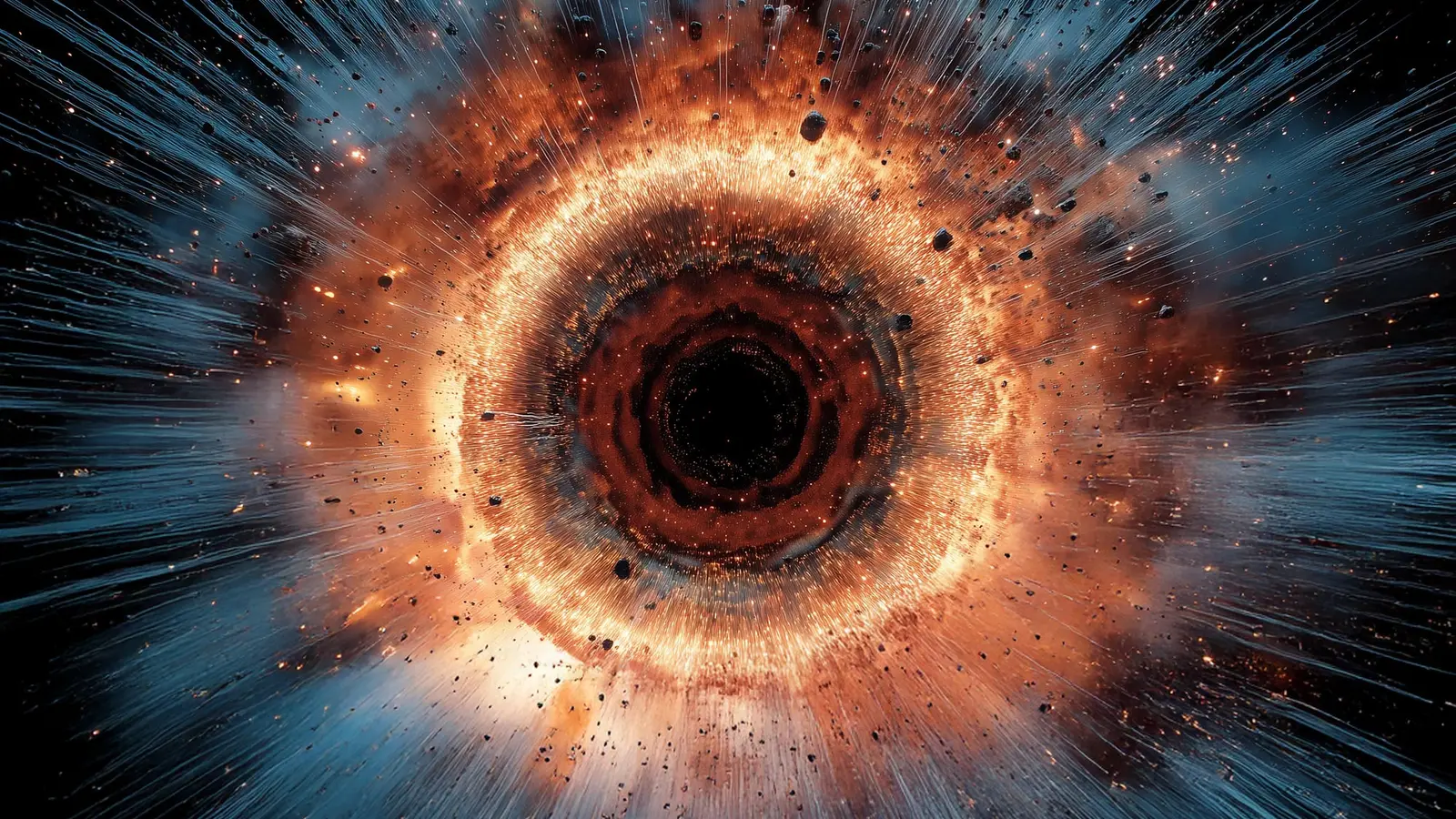4 Minutes
Researchers at the Universities of Birmingham and Sussex have developed a compact detector designed to sense gravitational waves in the long-missing milli-Hertz band. By combining optical resonators and atomic clock technology, this tabletop instrument could reveal merging black holes, tight white dwarf binaries and even faint echoes from the early universe—signals that current observatories can’t easily reach.
Researchers have built a small but powerful detector to find gravitational waves in a hidden frequency range. The discovery could expose unseen black hole activity and early-universe echoes. Credit: Shutterstock
A mid-band blind spot — and why it matters
Gravitational waves are ripples in spacetime produced by accelerating masses. Ground-based observatories like LIGO and Virgo have already detected high-frequency waves from stellar-mass black hole and neutron star mergers. At the opposite extreme, pulsar timing arrays probe very low frequencies. But between these extremes—roughly from 10-5 to 1 Hz, the so-called milli-Hertz or "mid-band"—there’s a persistent observational gap.
This mid-band is scientifically rich: it should host signals from white dwarf binaries in our galaxy, inspirals of intermediate-mass black holes, and stochastic backgrounds from processes in the early universe. Space missions such as the Laser Interferometer Space Antenna (LISA) are being built to investigate this range, but they’re not due to fly until the 2030s. A ground-based, faster-to-deploy alternative could let scientists probe these sources years sooner.

How the tabletop detector actually works
The new concept adapts technologies pioneered for optical atomic clocks—ultrastable lasers and precision optical cavities—to detect tiny changes in light caused by passing gravitational waves. Instead of the kilometre-scale arms of classic interferometers, each unit uses two orthogonal ultrastable optical resonators paired with an atomic frequency reference.
Key design features
- Optical resonators: These cavities lock laser light to extremely stable frequencies, making minute shifts measurable.
- Atomic clock reference: An atomic standard provides a trusted frequency anchor, improving long-term stability.
- Orthogonal channels: Two perpendicular cavities enable measurement of wave polarisation and incoming direction.
Because the setup is compact and lacks the long suspended masses of traditional interferometers, it is inherently less sensitive to seismic and Newtonian noise—common terrestrial disturbances that plague low-frequency measurements. That resilience could allow a network of such detectors to operate on the ground while delivering meaningful sensitivity in the milli-Hertz band.
Implications: what we could discover
Moving into the mid-band could transform several areas of astrophysics and cosmology. Observations of white dwarf binaries would refine models of stellar evolution and binary interaction. Detections of intermediate-mass black hole mergers would illuminate black hole growth and galaxy assembly. And if a stochastic background from the early universe were found, it would open a direct observational window onto physics at energies otherwise unreachable.
Co-author Dr. Vera Guarrera from the University of Birmingham noted that leveraging optical clock technology makes it feasible to build detectors that fit on a lab table and to plan a global network that could start searching for mid-band signals much earlier than space-based missions.
Professor Xavier Calmet of the University of Sussex emphasized the method’s broad reach: ground-based optical resonator detectors could both test models of galactic binaries and complement future space observatories like LISA, bridging a critical gap in gravitational wave coverage.
Why this approach could come online faster
Large space missions require long development and launch timelines and carry high costs. By contrast, the optical cavity approach reuses mature components from the precision metrology community. That makes it comparatively inexpensive and scalable: individual units could be manufactured, deployed, and networked in the near term—potentially delivering mid-band science well before the 2030s.
If realized, tabletop gravitational-wave detectors would not replace LISA or ground interferometers like LIGO, but would complement them—filling in a crucial frequency band and enriching our multi-band view of the gravitational-wave universe.
Source: scitechdaily


Leave a Comment